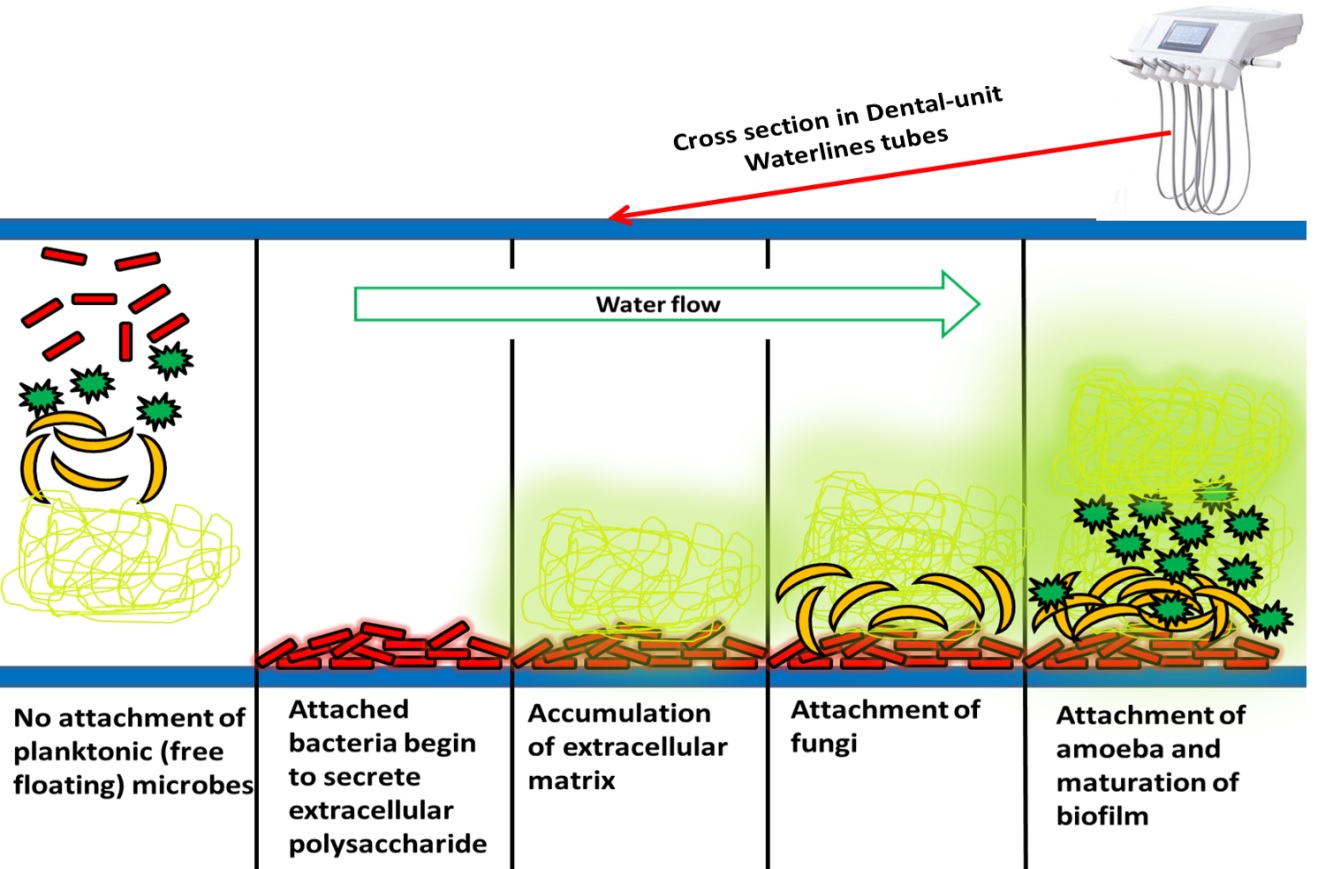Dental unit waterlines and health risks of pathogenic microbial contamination: An update review
Main Article Content
Abstract
Recently, there has been great concern about the levels of oral diseases associated with inappropriate and unsanitary oral care methods. In this line, the most serious is the water contamination with pathogenic microbes. Owing to the water microbial contamination of dental units, patients' oral health is threatened as a result of systemic disorders. Patients receiving treatment in dental unit waterlines were found to be affected by dangerous bacteria. Since both clients and dental staff are exposed to aerosols and water from dental equipment, the water should be of great quality. Due to the fact that dental unit waterlines (DUWLs) create a suitable environment for microbial development and the formation of biofilms, the water is often contaminated with a high density of several microorganisms (e.g., bacteria, fungi, protozoa, viruses), causing a health problem for dentists, patients and elderly patients, especially those with immunocompromised. This has fueled interest in presenting the current situation to shed light on (i) the microbial contamination of DUWLs and (ii) the connected infectious risks. It is essential that an elevated degree of mouth care be combined with adequate water quality and preventive dental units to maintain oral comfort, prevent deterioration, and promote public health. The growing population of individuals with compromised immune systems and the latest technological advancements concerning biofilms, water quality, etc. necessitate the implementation of improved management practices and the application of decontamination protocols for waterlines.
Article Details

This work is licensed under a Creative Commons Attribution 4.0 International License.
